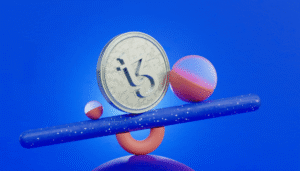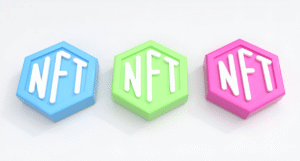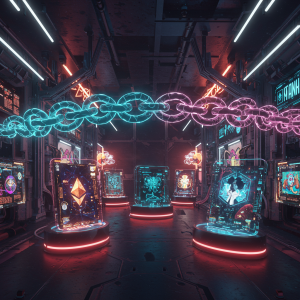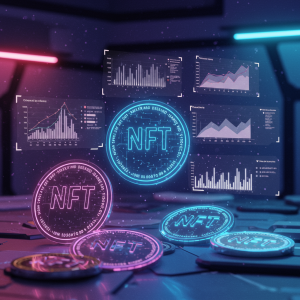What Is the Point of Having NFTs

NFTs, short for non-fungible tokens, are the craze of the digital age. From digital art being auctioned for millions to creative uses in gaming, real estate and more, NFTs have prompted debates, excitement and, yes, skepticism. But why would someone actually want to own NFTs — and why are they all the rage now?
In this blog, we’ll delve into the main benefits and use-cases of NFTs – deconstructing what gives them value – and discuss why NFTs are significant in our modern digital hellscape. By the end, you should have a good sense of why N.F.T.s are more than a mere passing fad — and how they are helping shape the future of ownership and innovation.
N.F.T.s: What Are They, and How Do They Work?
First, let’s get into what an NFT is.
An NFT, or non-fungible token, is a one-of-a-kind digital good that is recorded on a blockchain. Unlike cryptocurrencies such as Bitcoin — which are fungible, i.e. each unit of currency is worth the same and exchangeable 1-to-1 — NFTs are unique and cannot be replaced or exchanged on a like-for-like basis. Each NFT is unique or part of a very small edition, and it is this one-of-a-kindness that gives it value.
NFTs are essentially made through blockchain technology, which is provided (most commonly) by the Ethereum network, though many other blockchains enable NFTs as well. The blockchain serves as a tamper-proof, decentralized record of who owns what, so every last NFT (and there will only ever be a last one) is genuine and can be traced back to the moment it was created. This differentiation enables creators, buyers, and sellers to define explicit ownership rights and track the token’s history.
The Value of NFTs
At a basic level, NFTs are changing the way in which we think about and value things digital and physical. They are meant for so much more than digital collectibles and will break into deeper and more important refuges of society and commerce.
Provenance and Ownership
Where NFTs offer some of the greatest potential is in making digital items ownership clear and provable. Prior to NFTs, it was difficult to verify the originality and authenticity of digital files, such as art or music. With NFTs, owners have a verifiable and transparent proof-of-ownership record that is maintained on the blockchain. The records are immutable — they can’t be edited or changed in any way.
For example:
-
A digital artist can mint an artwork as an NFT and sell it to a collector, who will have indisputable evidence of ownership.
-
Songwriters could tokenize their songs, which would give purchasers an official version and not one that had been illegally pirated.
Empowering Creators
NFTs have offered a breakthrough new income source for creators. Throughout history, music, art, and creativity generally were the butt of some exploitation with middlemen and distributors taking their big cut. NFTs sidestep the middlemen and let creators keep a bigger portion of the earnings.
And artists can program royalties into their NFTs, so that they receive a percentage of every resale of their artwork. That’s something that was nearly impossible in traditional art markets or music licensing.
Digital Scarcity and Collectibles
Digital scarcity is one of the cornerstone elements of NFTs. Though digital files are infinitely duplicatable, the NFTs are encoded with the same underlying scarcity as other collectors’ items — say, original artwork, rare coins or baseball cards.
For instance:
-
Digital art pieces by well-known artists, or limited-edition sneakers attached to an NFT, or even special virtual gaming equipment, have special scarcity baked in, which drives demand.
-
Sellers may be able to charge a premium for digital goods that collectors believe will retain their uniqueness or be one of a limited number of a few dozen or a few hundred in existence.
Interoperation on the Web of Virtualities
NFTs are leading the way in making virtual worlds compatible with one another. Take gaming, for example. Players can acquire, buy, sell, or trade NFTs like virtual weapons, characters, or skin from one game to another, but the games must be using the same blockchain.
This can include metaverses, of course where users own things like virtual land, wearables and digital objects in the form of NFTs. These assets can be displayed, sold or traded in virtual worlds and can be free to be self-sovereign where users want and need them to be.
Investment and Speculation
And while the creative and utilitarian elements are crucial to NFTs, they also are seen as a vehicle for investment. As with precious currencies or the finest art, some NFTs can appreciate in value over the years if they prove rare or culturally relevant.
For instance:
-
Beeple’s “Everydays” artwork sold for $69 million as an NFT in 2021, offered by some to be a cultural landmark despite only achieving fame through its uniqueness and demand.
-
A few NFT-focused ventures are also offering fractional ownership, allowing people to buy small pieces of valuable NFTs, effectively democratizing the way these people can access the most upscale markets.
Tokenizing Real-World Assets
Outside the virtual space, NFTs are creeping up to tokenize the physical world.
For example:
-
However, real estate can also be tokenized with NFTs, akin to owning a piece of the property based on shares. In other words, this allows for fractional ownership and opens the doors for a broader group of people to own high-value assets.
-
Photos, drawings, animated stickers and other digital artwork can include an NFT, as can more traditional luxury items like sneakers or handbags, helping to cut down on counterfeiting and making secondary markets for such goods operate more smoothly.
Use Cases of NFTs in Various Sectors
And NFTs are not limited just to art and gaming. They’re promising to upend a variety of industries. Here are some of the leading examples:
Art and Music
NFTs are innovating the creative process by allowing artists and musicians to earn specific revenue directly from their work. OpenSea and Rarible, among others, facilitate creators minting and selling unique digital artwork, while musicians can release limited-edition NFTs pegged to singles, albums, or exclusive fan experiences.
Fashion and Luxury Goods
And fashion brands are making virtual clothing collections in the metaverse with the help of NFTs. Some companies also create NFTs as digital certificates of authenticity for luxury goods, like watches, handbags or sneakers.
Sports and Entertainment
Interest from sports fans, who can now buy collectible memorabilia as NFTs. For example, the N.B.A.’s Top Shot platform lets fans own highlights of their favorite basketball players. Concert tickets are also being sold as NFTs, for secure and anti-counterfeit entry.
Real Estate
The transformation of buying and selling property is beginning to be carried out by NFTs. Making real estate into NFTs streamlines the process, makes it transparent, and opens the door up to everyone. Investors can also divide ownership of properties through NFTs.
Education and Credentials
NFTs provide function as trustworthy issuance of certificates, diplomas, or badges for universities or vocational training programs. These credentials could be globally adopted and carried as digital ones with no fraud.
Why NFTs Matter Long Term
It is about a redefinition of ownership, a way to create value for creators and a checkbox on the march of technology into ordinary lives.
Though there’s certainly skepticism around NFTs, they’ve already shown an ability to decentralize industries, increase transparency and create more equitable opportunities for creators and users. From art to real estate, their flexibility and influence on traditional systems demonstrates that NFTs are not a mere passing fad.
How to Explore the NFT Ecosystem
Whether you are a creator, a buyer or just interested in this fast-emerging trend, NFTs are a treasure trove of possibilities to explore. Begin by looking into legitimate NFT platforms such as OpenSea, Binance NFT or Rarible. There are ways to engage with communities on platforms like Discord or Twitter to learn from the more experienced NFT buyers, but don’t forget to exercise caution and do your research on any NFT you purchase.
NFTs introduce an entirely new way to engage with the digital and the physical world. And the best part? We’re only beginning to realize what they are capable of.








